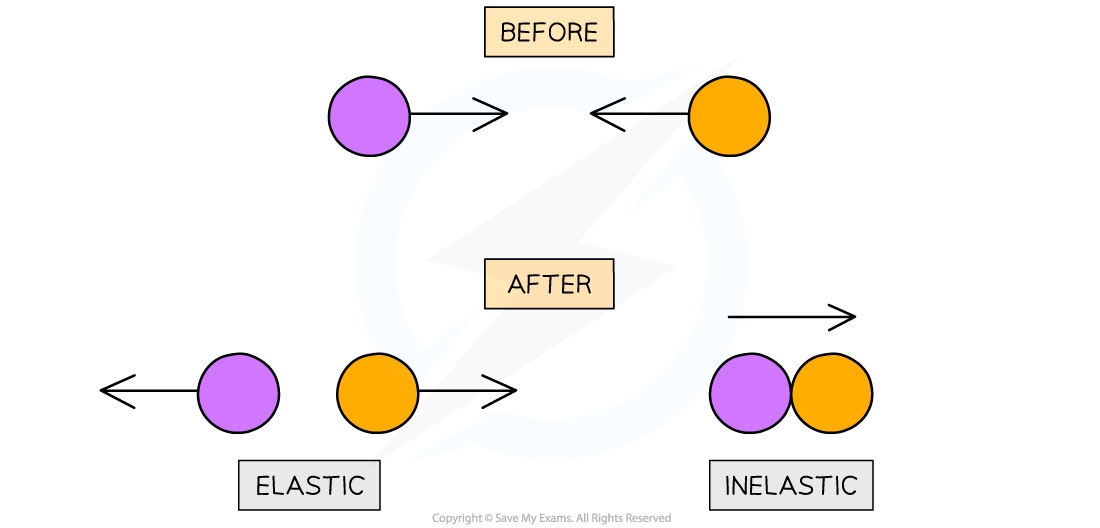- Both the tennis ball and the brick have the same momentum
- Even though the brick is much heavier than the ball, the ball is travelling much faster than the brick
- This means that on impact, they would both exert a similar force (depending on the time it takes for each to come to rest)
Momentum (Edexcel GCSE Physics)
Revision Note

Author
Katie MExpertise
Physics
Momentum
Higher Tier Only
- A moving object has momentum which is defined by the equation:
p = mv
- Where:
- p = momentum in kilogram metre per second (kg m/s)
- m = mass in kilograms (kg)
- v = velocity in metres per second (m/s)
- This means that an object at rest (i.e v = 0) has no momentum
- Momentum keeps an object moving in the same direction, making it difficult to change the direction of an object with a large momentum
- Since velocity is a vector this means that the momentum of an object also depends on its direction of travel
- This means that momentum can be either positive or negative
- If an object travelling to the right has positive momentum, an object travelling in the opposite direction (to the left) will have negative momentum

The tennis ball's momentum is negative when it moves in the opposite direction to which it initially was travelling in
- Therefore, the momentum of an object will change if:
- The object accelerates (speeds up) or decelerates (slows down)
- Changes direction
- Its mass changes
Worked example
Which object has the most momentum?

Exam Tip
Remember the units of momentum as kg m/s which is the product of the units of mass (kg) and velocity (m/s).Which direction is taken as positive is completely up to you in the exam. In general, the right and upwards are taken as positive, and down or to the left as negative.
Examples of Momentum
Higher Tier Only
- Examples of momentum in an event are collisions
- Objects will either:
- Collide and move in opposite directions - this is an elastic colision
- Collide and move in the same direction together - this is an inelastic collision
- When the objects move in opposite directions:
- Each object will have a different velocity depending on its mass and initial momentum of the system
- When the objects move in the same direction together:
- They will have a combined mass and velocity
- Momentum is always conserved in a collision

The difference between elastic and inelastic collisions
Exam Tip
If an exam question asks you to analyse a collision, follow these tips for full marks:
- Always consider the motion before and after the collision and state:
- The velocities of each object
- The direction each object moves
- State whether the collision was elastic or inelastic and explain your reasoning
- In a perfectly elastic collision, the kinetic energy is the same before and after
- In a perfectly inelastic collision, the two objects stick together after colliding
- Describe any energy transfers that occur if kinetic energy is not conserved
- For example, it may be converted into heat, sound, elastic potential energy etc

You've read 0 of your 0 free revision notes
Get unlimited access
to absolutely everything:
- Downloadable PDFs
- Unlimited Revision Notes
- Topic Questions
- Past Papers
- Model Answers
- Videos (Maths and Science)
Did this page help you?